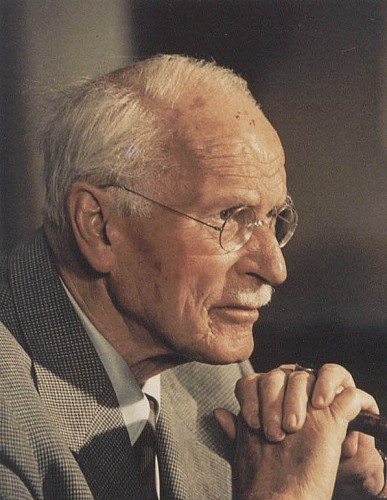Ex: http://www.counter-currents.com
In the denazification atmosphere following World War II Carl Jung, founder of analytical psychology, found himself accused of having ‘Nazi’ sympathies. While Jung was a man of the ‘Right’[1] his essay explaining Hitlerism as an evocation of Wotan as a repressed archetype of the German collective unconscious put him on the long suspect list of intellectuals who were accused of being apologists for National Socialism.[2] He was fortunate to have been in a neutral nation in the aftermath of World War II.
Certainly, Jung’s school of psychology does not endear itself to the Left in general and to the large numbers of Jews in psychology. A recent biographer states of Jung’s falling out with his mentor Sigmund Freud:
Freud himself was inclined to believe his problems with Jung typified a general incompatibility between Jew and gentile, that Jung hated the ‘Jewishness’ or psychoanalysis and wanted to substitute a Christianised version. Here was irony indeed. Freud had wanted Jung to be an apostle to the gentiles, to prevent psychoanalysis from becoming a Jewish sect. But Jung played the role of St Paul in a quite different sense. Just as Paul had substituted neo-Platonic ‘Christology’ for the original teachings of Jesus, so Jung proposed a psychoanalysis purged of the elements that had kept Freudianism ghettoised as a construct of Viennese Jews.[3]
Hence, when Jung gave his ‘lecture on Wotan, which was first published in 1936,[4] and republished after the war as part of a collection of analytical observations on the modern world,[5] he did so as a doctor diagnosing a phenomenon; not as a political crusader. He was offering observations and explanations in detached, scholarly manner, which is always difficult for many in academia to understand.
Archetypes
Jung’s conception of the psyche as comprising three ‘layers’, including the collective unconscious, is briefly explained in this volume in my essay ‘Odin and the Faustian Imperative’, where Jung’s ‘Wotan’ essay is also mentioned. Archetypes, in Jungian psychology, are prototypes of symbols that are inherited and reside within the unconscious. These symbols transcend the individual psyche and are inherited from the collectivity of our ancestors. They are therefore both universal at the most primal level, in the sense of there being a ‘human race’, and they are also racially specific, in the sense that the ‘human race’ became differentiated (assuming that it was not always so), and differentiate further in terms of culture.
Wotan is an archetype of the Germanic collective unconscious. In explaining the influence of psychic forms on humanity, Jung returned to the archetype of Wotan in a letter to his friend, the Chilean diplomat and writer Miguel Serrano. Jung when writing this in the 1960s was attempting to suggest remedies for the modern predicament of civilised man. While eschewing the mass society that was being accelerated by technology, Jung stated that modern man, or at least the Westerner, must try to find his individual identity without retreating into hyper-individualism: ‘He can only discover himself when he is deeply and unconditionally related to some, and generally related to a great many, individuals with whom he has a chance to compare, and from whom he is able to discriminate himself.’[6]
Within this wider association of the individual there are layers of inherited ancestral experience passed on through millennia; deposited in the individual’s personal unconscious, which is itself a part of the collective unconscious, the reoccurring motifs becoming protosymbols or archetypes. The psyche is like a storehouse or memories not only pertaining to one’s own experiences but also to the collective experiences of one’s forebears, embracing the wider sense of the race and culture, and ultimately the history of a more universal memory at its most elemental, universal level. The layers of the psyche might be seen as analogous to the layers of the human brain, which is a physiological record of cerebral evolution that includes the most primal, the limbic system and the central core, and the most recent, the cerebral cortex.
According to Jung, the ‘Gods, Demons and Illusions’ are names for the inherited inhabitants of the psyche, individually and collectively:
…they exist and function and are born anew with every generation. They have an enormous influence on individual as well as collective life and despite their familiarity they are curiously non-human. This latter characteristic is the reason why they are called Gods and Demons in the past and why they are understood in our ‘scientific’ age as the psychical manifestations of the instincts, in as much as they represent habitual and universally occurring attitudes and thought forms. They are the basic forms, but not the manifest, personified or otherwise concretised images. They have a high degree of autonomy, which does not disappear, when the manifest images change.[7]
Repressed psychic complexes continue to influence not only the individual, but also the collectivity. It is commonly enough known that repression causes mental illness in an individual. However, the same principle applies to repression in entire nations and cultures. If these repressed complexes are not identified and integrated, they manifest in other, unhealthy, ways. A Jungian explanation of repression is that:
There is general agreement that many of the things in the unconscious have become unconscious as a result of repression[…]. This means that there are some things that are unconscious that, at one time or another, have been conscious, and ‘repression’ is a word used to indicate that this has happened. Repression is very closely connected with forgetting.
[…] although we may have forgotten something there is an important sense in which it is still ‘there’ in our psyche and this is what we mean by saying that it is unconscious.[8]
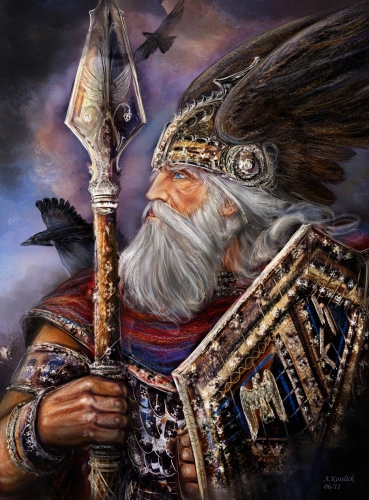 The things that are repressed are those that undermine our image of ourselves if we remembered them.[9] Hence, the Germanics, having been a Christian folk for centuries, were required to repress their ancestral Heathenism, and Wotan thereby became an archetype relegated to the ‘shadow’ of that folk’s collective unconscious, but continuing to exist nonetheless. While repression might play a healthy role in individual development, it is usually undesirable. The Jungian, David Cox, continues:
The things that are repressed are those that undermine our image of ourselves if we remembered them.[9] Hence, the Germanics, having been a Christian folk for centuries, were required to repress their ancestral Heathenism, and Wotan thereby became an archetype relegated to the ‘shadow’ of that folk’s collective unconscious, but continuing to exist nonetheless. While repression might play a healthy role in individual development, it is usually undesirable. The Jungian, David Cox, continues:
The first reason why repression is more bad than good is that it means losing some part of oneself. When we wholly forget something we have thought or done, or something that has happened to us it is not merely a matter of forgetting that thing, we also refuse to see that we are the sort of person capable of behaving in the way that we did […]. It may be that there are things that would be so destructive to a man’s character if he did not repress them that it is much better that they should remain repressed, and it is certain that there are right times for everything, so that it might be that it is better not to recover a repressed memory at some particular time.[10]
The second reason why repression is liable to have negative consequences is that,
[…] although the result of repression may be that we do not know about a particular tendency within us, that tendency is still there and it is liable to interfere with our conscious aims. […] Repressed tendencies are able to cause all kinds of peculiar distortions in our behaviour, just because we do not known about them. When we realise that we have tendencies of a particular kind we can do something about trying to control them, but so long as they remain unconscious we can exercise no control over them whatsoever.[11]
In understanding the concepts of repression, the shadow and the collective unconscious, one begins to see why Jung approached Hitlerism with a hopeful attitude, in that this was a manifestation on a mass scale of potentially individuating an entire nation by means of uncovering the repressed archetype and channelling it to conscious good, rather than letting it fester in subterranean, and ultimately destructive manner. Such a raising to consciousness was, regardless of the final outcome, a necessity, because the Germanics still had these unresolved complexes that were entering into the technological age. It seems to have been something that had been awakened by the combined savagery and technology of World War I, and as the poem (cited below) of the soldier Hitler indicates, he was already coconscious of this in 1914.
When a patient seeks assistance from an analyst, the latter aims to bring to consciousness the repressed complexes that are unconsciously influencing the individual. The same pattern of repressed memories and complexes reside within the collective unconscious of a people. Jung in witnessing the mass resurgence of Germanic primeval passions, called the archetype from the ‘shadow’ or repressed aspect of the Germanics ‘Wotan’. To Jung this was of more relevance than a study of social, political and economic phenomena in understanding the sudden and often frenzied mass mobilisation of the Germans under Hitler. Of Wotan Jung stated to Serrano that:
When, for instance, belief in the God Wotan vanished and nobody thought of him anymore, the phenomenon originally called Wotan remained; nothing changed but his name, as National Socialism has demonstrated on a grand scale. A collective movement consists of millions of individuals, each of whom shows the symptoms of Wotanism and proves thereby that Wotan in reality never died, but has retained his original vitality and autonomy.
Our consciousness only imagines that it has lost its Gods; in reality they are still there and it only needs a certain general condition in order to bring them back in full force. This condition is a situation in which a new orientation and adaptation is needed. If this question is not clearly understood and no proper answer is given, the archetype, which expresses this situation, steps in and brings back the reaction, which has always characterised such times, in this case Wotan.[12]
While much of a sensationalist nature has been written about Hitler being possessed by demons, or controlled by occult forces, etc.,[13] from the Jungian perspective it is relevant to ask whether Hitler was the individual through which the Wotan archetype was ‘brought back in full force’, manifesting in ‘a new orientation and adaptation’? Hitler seems to have been conscious of the Wotanistic force coming to consciousness in the trenches of World War I, when he wrote a ‘strange poem’[14] during the Fall of the first year of that war:
I often go on bitter nights
To Wotan’s oak on the quiet glade
With dark powers to weave a union –
The runic letters the moon makes with its magic spell
And all who are full of impudence during the day
Are made small by the magic formula!
They draw shining steel – but instead of going into combat
They solidify into stalagmites.
So the false ones part from the real ones –
I reach into a nest of words
And then give the good and just
With my formula blessings and prosperity.[15]
The poem reads like a choosing and initiation of Wotan’s Einherjar in the trenches of the war in readiness for the black and brown shirted battalions that were to be formed largely from veterans. Toland remarks that a few weeks later Hitler ‘made a portentous prophesy to his comrades: “You will hear much about me. Just wait until my time comes”’.[16]
Of the problems confronting modern Western man who had entered the technological age without having integrated the psychic layers from previous epochs, and which therefore laid repressed, the Germans were the most problematic. The imposed Christian veneer was thinner among them than others, according to Jung, and the Heathen gods nearer the surface. The repressed Wotan archetype made Germans as a collectivity prone to mass hysteria, which did not, however, preclude a generally normal life, just as the individual hysteric could generally be normally functional. It was recognised in history as the furor Germanicus, and this was what Hitler was channelling.[17] When Jung wrote his essay on Wotan he did so in order to show how his theories on the collective unconscious had been verified. It was a warning to modern man to recognise and integrate what was being repressed before the archetypes of the ‘shadow’ burst forth in an overwhelming, destructive manner.
The concept of the ‘shadow’ is important in analytical psychology. While the ‘shadow’ connotes all that it dark and devilish that has been repressed by civilised man, it also carries creative impulses and sound instincts. According to Jung, all archetypes develop favourable and unfavourable effects. They reflect a polarity or what Jung called a complexio oppositorum.[18] The Jungian analyst seeks to unite these conflicting opposites within the individual to create an integrated or total person, or what in Jungian psychology is called ‘individuation’; what Jung called a ‘whole’[19] person. This might also be seen as the psychological counterpart to Hegel’s historical dialectic of history: that of thesis, antithesis, and synthesis. The analogy occurs to McLynn, who writes that ‘individuation’ is: ‘as in Hegel’s system, the self-actualisation of the ultimate world principle, which in Jung’s terms is the objective psyche. Jung’s system is thus a psychological version of Hegel’s objectification of history’. [20] This is why Jung advocated a ‘wait and see’ approach to the rise of Hitlerism, rather than immediate and hysterical denunciations, as this was a potential unfolding of a psychological dialectic and there existed the possibility of a collective individuation for an entire people. It might also provide an example of how mankind could enter the technological age, when, as Jungians assert, his psyche is still influenced by previous layers of unconscious psychic experience dating from millennia.
Jung’s Essay: ‘Wotan’
The essay ‘Wotan’ was written in 1936, three years after the Hitlerite assumption. Jung had contact with the German Faith Movement, allied to Hitlerism, and knew its leader Jacob Hauer, who had attended Eranos Conferences at Ascona, Switzerland, where he had impressed Jung with his talks on the racial unconscious by using Jung’s concept of the collective unconscious as a predicate.[21] Jung insisted even after the war that since every archetype contains both good and evil, it was impossible to immediately know what course National Socialism would take.[22] As for the essay itself, Jung had observed that in Germany it ‘is that an ancient God of storm and frenzy, the long quiescent Wotan, [that] should awake, like an extinct volcano’,[23] while in Soviet Russian a worship of science manifested also in violent eruption against the metaphysical.
The embryonic manifestation had been observed among German youth in the aftermath of World War I, who roamed the countryside to commune with nature, reverting to the Heathen ethos in a world of technology that had become nihilistic. Jung noted that Wotanist rites had even attended the manifestation:
We have seen him come to life in the German Youth Movement, and right at the beginning the blood of several sheep was shed in honour of his resurrection. Armed with rucksack and lute, blond youths, and sometimes girls as well, were to be seen as restless wanderers on every road from North Cape to Sicily, faithful votaries of the roving god.[24]
Jung was here referring to the generically named wandervogel and other similar groups that rebelled against bourgeoisie materialism, beginning during the late 19th Century. It was the start of a movement that was a reaction against the modern world, which ended up contributing to the emergence of the hippie movement during the 1960s and 1970s, [25] heavily influenced by German immigrants.[26] Gordon Kennedy directly relates this return to nature that manifested in Germany among the youth to the revival of Germanic Heathenism and to Wotan and other ancient Gods.[27] Kennedy and Ryan describe this as ‘a huge youth movement that was both anti-bourgeois and Teutonic Pagan in character, composed mostly of middle class German children, organized into autonomous bands’. [28]
The atavistic resurgence could have taken different forms to that of Hitlerism, but as Jung and others observed, Hitler was a magician, a ‘medicine man’, and an ‘avatar’,[29] able to give form and expression to the Germanic ‘shadow’. In 1937 Jung described Hitler as ‘a medium… the mouthpiece of the Gods of old…’[30]
From the wandervogel and similar movements of disaffected youth, the atavistic revolt was taken over by the masses of unemployed, among whom were many war veterans, whose roaming was not through the hills and countryside but through the depressed streets of Weimer Germany.
Later, towards the end of the Weimar Republic, the wandering role was taken over by thousands of unemployed, who were to be met with everywhere on their aimless journeys. By 1933 they wandered no longer, but marched in their hundreds of thousands. The Hitler movement literally brought the whole of Germany to its feet, from five-year-olds to veterans, and produced a spectacle of a nation migrating from one place to another. Wotan the wanderer was on the move. He could be seen, looking rather shamefaced, in the meeting-house of a sect of simple folk in North Germany, disguised as Christ sitting on a white horse. I do not know if these people were aware of Wotan’s ancient connection with the figures of Christ and Dionysus, but it is not very probable.[31]
Wotan, the wanderer, had inspired the wandervogel and other youth, as Kenndey and Ryan stated in their study of the counter-culture movement. He now assumed his role as leader of the Wild Hunt, as his ‘avatar’ began to gather up the aimless, wandering masses:
Wotan is a restless wanderer who creates unrest and stirs up strife, now here, now there, and works magic. He was soon changed by Christianity into the devil, and only lived on in fading local traditions as a ghostly hunter who was seen with his retinue, flickering like a will o’ the wisp through the stormy night. […].[32]
With the imposition of the Christian veneer on a folk whose God had been driven into the ‘shadows’, waiting to be evoked, Wotan had continued to make his presence felt on the peripheries of consciousness of the Germanics as an elusive figure, the leader of the Wild Hunt, who was now being called back to conscious expression in his role as pre-eminent God. Jung states that Wotan had been kept in sustenance by Germany’s literary figures, and in particular by Nietzsche, who was a seminal influence on Jung’s thinking.[33] The Wotanic force had too often been identified with its Classical Dionysic form by academe, but there seems little point in referring to a Classical archetype for a Germanic one, other than as mean of analogy. Jung stated of this literary tradition that kept the Wotanic force alive, albeit in Classical mode:
The German youths who celebrated the solstice with sheep-sacrifices were not the first to hear the rustling in the primeval forest of unconsciousness. They were anticipated by Nietzsche, Schuler, Stefan George, and Ludwig Klages. The literary tradition of the Rhineland and the country south of the Main has a classical stamp that cannot easily be got rid of; every interpretation of intoxication and exuberance is apt to be taken back to classical models, to Dionysus, to the peur aeternus and the cosmogonic Eros. No doubt it sounds better to academic ears to interpret these things as Dionysus, but Wotan might be a more correct interpretation. He is the god of the storm and frenzy, the unleasher of passions and the lust of battle; moreover he is superlative magician and artist in illusion who is versed in all secrets of an occult nature.[34]
Jung sees Wotan in Nietzsche’s Zarathustra,[35] although Nietzsche seems to have been writing unconsciously under the influence of the hidden god:
Nietzsche’s case is certainly a peculiar one. He had no knowledge of Germanic literature; he discovered the ‘cultural Philistine’; and the announcement that ‘God is dead’ led to Zarathustra’s meeting with an unknown god in unexpected form, who approached him sometimes as an enemy and sometimes disguised as Zarathustra himself. Zarathustra, too, was a soothsayer, a magician, and the storm-wind.
Jung quotes from Nietzsche’s Zarathustra to show the analogous nature between the two, drawing specifically on these figures as conjurers of storms:
And like a wind shall I come to blow among them, and with my spirit shall take away the breath of their spirit; thus my future wills it.
Truly, a strong wind is Zarathustra to all that are low; and this counsel gives he to his enemies and to all that spit and spew: ‘Beware of spitting against the wind’.
And when Zarathustra dreamed that he was guardian of the graves in the ‘lone mountain forest of death’, and was making a mighty effort to open the gates, suddenly. A roaring wind tore the gates asunder; whistling, shrieking, and keening, it cast a black coffin before me.
And amid the roaring and whistling and shrieking the coffin burst open and spouted a thousand peals of laughter.
The disciple who interpreted the dream said to Zarathustra:
Are you not yourself the wind with shrill whistling, which bursts open the gates of the fortress of death?
Are you not yourself the coffin filled with life’s gay malice and angel-grimaces?
Nietzche’s Zarathustra seems to be a perfect poetic expression of Wotan, as well as being a prophetic insight into the ‘wind with shrill whistling, which bursts open the gates of the fortress of death’ in Germany less than forty years later? To buttress his case for what might be considered as Nietzsche’s own unconscious possession by the God, Jung sites three poems by Nietzsche that had been written over the course of several decades. The poems show that although Nietzsche was unconscious of the identity of this ‘Unknown God’, Jung continues, he was certainly aware of the god’s existence and influence upon him. It indicates also something of the still very subterranean life of Wotan in the collective unconscious of Germans that Nietzsche was not able to put a name to the God, despite its obvious Wotanic character:
In 1863 or 1864, in his poem To the Unknown God, Nietzsche had written:
I shall and will know thee, Unknown One,
Who searchest out the depths of my soul,
And blowest through my life like a storm,
Ungraspable, and yet my kinsman!
I shall and will know thee, and serve thee.
Twenty years later, in his Mistral Song, he wrote:
Mistral wind, chaser of clouds,
Killer of gloom, sweeper of the skies,
Raging storm-wind, how I love thee!
Are we not both the first-fruits
Of the same womb, forever predestined
To the same fate?
In the dithyramb known as Ariadne’s Lament, Nietzsche is completely the victim of the hunter-god:
Stretched out, shuddering,
Like a half-dead thing whose feet are warmed,
Shaken by unknown fevers,
Shivering with piercing icy frost arrows
Hunted by thee, O thought,
Unutterable! Veiled! Horrible one!
Thou huntsman behind the cloud.
Struck down by thy lightening bolt,
Thou mocking eye that stares at me from the dark!
Thus I lie.
Writhing, twisted, tormented
With all eternal tortures.
Smitten
By thee, cruel huntsman,
Thou unknown – God!
When Nietzsche famously declared ‘God is dead’, clearly there was the need to attach a clarification. This ‘Unknown God’ was anything but dead and had Nietzsche in his grip. If Hitler was the ‘avatar’ of Wotan, Nietzsche was the scribe and prophet. Jung refers to a mystical experience that Nietzsche had which indicates a state of possession by Wotan as an archetype:
This remarkable image of the hunter-god is not a mere dithyrambic figure of speech but is based on an experience which Nietzsche had when he was fifteen years old, at Pforta. It is described in a book by Nietzsche’s sister, Elizabeth Foerster-Nietzsche. As he was wandering in a gloomy wood at night, he was terrified by a ‘blood-curdling shriek from a neighbouring lunatic asylum’, and soon afterwards he came face to face with a huntsman whose ‘features were wild and uncanny’. Setting his whistle to his lips ‘in a valley surrounded by wild scrub’, the huntsman ‘blew such as a shrill blast’ that Nietzsche lost consciousness – but woke up again in Pforta. It was a nightmare. It is significant that in his dream Nietzsche, who in reality intended to go to Eisleben, Luther’s town, discussed with the huntsman the question of going instead to ‘Teutschenthal’ (Valley of the Germans). No one with ears can misunderstand the shrill whistling of the storm-god in the nocturnal wood.
Was it really only the classical philologist in Nietzsche that led to the god being called Dionysus instead of Wotan – or was it perhaps due to his fateful meeting with Wagner?
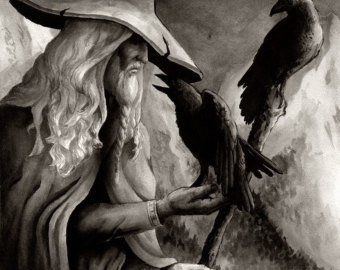 The imagery has the characteristics of Wotan as leader of the Wild Hunt. It is in this role that Wotan had survived his relegation to the ‘shadow of the German collective unconscious, which enabled him through the centuries to re-emerge into consciousness. It is in this role that Wotan has manifested from Scandinavia to Switzerland. Nietzsche’s dream contains all the primary elements of the myth. It is in forests at night that an unwary traveller might encounter a frightening countenance of Wotan, with the cry of ‘Midden in dem Weg!’, while his fellows shout ‘Wod! Wod!’[36] Nietzsche as a lad of 15 had encountered the ‘Unknown God’ as Wotan in the form of the Wild Huntsman, but had never recognised him. Despite his later poetic descriptions of the ‘Unknown God’ who is unmistakably Wotan, his identity remained obscured by Nietzsche’s Classical preoccupations. Jung continues with another prophetic vision among the Germans of the return of Wotan:
The imagery has the characteristics of Wotan as leader of the Wild Hunt. It is in this role that Wotan had survived his relegation to the ‘shadow of the German collective unconscious, which enabled him through the centuries to re-emerge into consciousness. It is in this role that Wotan has manifested from Scandinavia to Switzerland. Nietzsche’s dream contains all the primary elements of the myth. It is in forests at night that an unwary traveller might encounter a frightening countenance of Wotan, with the cry of ‘Midden in dem Weg!’, while his fellows shout ‘Wod! Wod!’[36] Nietzsche as a lad of 15 had encountered the ‘Unknown God’ as Wotan in the form of the Wild Huntsman, but had never recognised him. Despite his later poetic descriptions of the ‘Unknown God’ who is unmistakably Wotan, his identity remained obscured by Nietzsche’s Classical preoccupations. Jung continues with another prophetic vision among the Germans of the return of Wotan:
In his Reich ohne Raum, which was first published in 1919, Bruno Goetz saw the secret of coming events in Germany in the form of a very strange vision. I have never forgotten this little book, for it struck me at the time as a forecast of the German weather. It anticipates the conflict between the realm of ideas and life, between Wotan’s dual nature as a god of storm and a god of secret musings. Wotan disappeared when his oaks fell and appeared again when the Christian God proved too weak to save Christendom from fratricidal slaughter. When the Holy Father at Rome could only impotently lament before God the fate of the grex segregatus, the one-eyed old hunter, on the edge of the German forest, laughed and saddled Sleipnir.
Hence, when Hitler triumphed over Germany Jung regarded the role of archetypes in explaining the phenomenon as of more use than political or sociological interpretations:
We are always convinced that the modern world is a reasonable world, basing our opinion on economic, political, and psychological factors. But if we may forget for a moment that we are living in the year of Our Lord 1936, and, laying aside our well-meaning, all-too human reasonableness, may burden God or the gods with the responsibility for contemporary events instead of man, we would find Wotan quite suitable as a causal hypothesis. In fact, I venture the heretical suggestion that the unfathomable depths of Wotan’s character explain more of National Socialism than all three reasonable factors put together. There is no doubt that each of these factors explains an important aspect of what is going on in Germany, but Wotan explains yet more. He is particularly enlightening in regard to a general phenomenon, which is so strange to anybody not a German that it remains incomprehensible, even after the deepest reflection.
Perhaps we may sum up this general phenomenon as Ergriffenheit – a state of being seized or possessed. The term postulates not only an Ergriffener (one who is seized) but, also, an Ergreifer (one who seizes). Wotan is an Ergreifer of men, and, unless one wishes to deify Hitler – which has indeed actually happened – he is really the only explanation. It is true that Wotan shares this quality with his cousin Dionysus, but Dionysus seems to have exercised his influence mainly on women. The maenads were a species of female storm-troopers, and, according to mythical reports, were dangerous enough. Wotan confined himself to the berserkers, who found their vocation as the Blackshirts of mythical kings.
A mind that is still childish thinks of the gods as metaphysical entities existing in their own right, or else regards them as playful or superstitious inventions. From either point of view the parallel between Wotan redivivus and the social, political, and psychic storm that is shaking Germany might have at least the value of parable. But since the gods are without doubt personifications of psychic forces, to assert their metaphysical existence is as much an intellectual presumption as the opinion that they could ever be invented. Not that ‘psychic forces’ have anything to do with the conscious mind, fond as we are of playing with the idea that consciousness and psyche are identical. This is only another piece of intellectual presumption. ‘Psychic forces’ have far more to do with the realm of the unconscious. Our mania for rational explanations obviously has its roots in our fear of metaphysics, for the two were always hostile brothers. Hence, anything unexpected that approaches us from the dark realm is regarded either as coming from outside and, therefore, as real, or else as a hallucination and, therefore, not true. The idea that anything could be real or true which does not come from outside has hardly begun to dawn on contemporary man.
For the sake of better understanding and to avoid prejudice, we could of course dispense with the name ‘Wotan’ and speak instead of the furor Teutonicus. But we should only be saying the same thing and not as well, for the furor in this case is a mere psychologizing of Wotan and tells us no more than that the Germans are in a state of ‘fury’. We thus lose sight of the most peculiar feature of this whole phenomenon, namely, the dramatic aspect of the Ergreifer and the Ergriffener. The impressive thing about the German phenomenon is that one man, who is obviously ‘possessed’, has infected a whole nation to such an extent that everything is set in motion and has started rolling on its course towards perdition.[37]
It is evident from the above passages that Jung was observing a phenomenon and explaining its origins, in a detached, scholarly manner. However, for many in academia detached, scholarly objectivity regarding such matters is tantamount to being a ‘Nazi sympathiser’, and one can only apparently escape the smear by hysterical declarations of opposition reading more like political tracts than to try to examine a phenomenon in a clinical manner, and thereby perhaps render some genuine service to mankind. Jung was observing what was taking place in Germany on a collective basis, as he would observe and analyse a patient as an individual. He was also offering an early warning where the phenomenon might lead, once the ‘psychic force’ of Wotan had been unleashed, which might assume the role of leader of the Wild Hunt, pitilessly taking all before it, rather than as his role of muse who had shortly before inspired the happy wanderings of thousands of German youngsters, as they hiked the countryside, far and wide, singing to the tunes of mandolin and guitar in joyous rejection of the materialistic and technological epoch,[38] and which now manifested in the Hitler Youth and League of German Maidens. Jung contiues:
It seems to me that Wotan hits the mark as an hypothesis. Apparently he really was only asleep in the Kyffhauser mountain until the ravens called him and announced the break of day. He is a fundamental attribute of the German psyche, an irrational psychic factor which acts on the high pressure of civilization like a cyclone and blows it away. Despite their crankiness, the Wotan-worshippers seem to have judged things more correctly than the worshippers of reason. Apparently everyone had forgotten that Wotan is a Germanic datum of first importance, the truest expression and unsurpassed personification of a fundamental quality that is particularly characteristic of the Germans. Houston Stewart Chamberlain[39] is a symptom which arouses suspicion that other veiled gods may be sleeping elsewhere. The emphasis on the German race – commonly called ‘Aryan’ – the Germanic heritage, blood and soil, the Wagalaweia songs, the ride of the Valkyries, Jesus as a blond and blue-eyed hero, the Greek mother of St. Paul, the devil as an international Alberich in Jewish or Masonic guise, the Nordic aurora borealis as the light of civilization, the inferior Mediterranean races – all this is the indispensable scenery for the drama that is taking place and at the bottom they all mean the same thing: a god has taken possession of the Germans and their house is filled with a ‘mighty rushing wind’. It was soon after Hitler seized power, if I am not mistaken, that a cartoon appeared in Punch of a raving berserker tearing himself free from his bonds. A hurricane has broken loose in Germany while we still believe it is fine weather.[40]
Atavistic resurgence had conquered ‘reason’, which itself often had assumed forms – and continues to do so – that are irrational and take on religious manifestation, giving testimony to the irrational forces that continue to guide man, whatever the rationalist veneer. Hence, the ‘Enlightenment’ gave rise to the antagonistic Cults of ‘Reason’ and of ‘Nature’ among the French Revolutionaries, whose ideologues unfurled the banner of ‘science’, only to become manifest in the spectacle of an actress adorned, classical style, as the ‘Goddess of Reason’ upon the altar of Notre Dame Cathedral in 1793, while scientific materialism in the USSR deified the corpse of Lenin by mummifying it and entombing it within a stepped pyramid.[41]
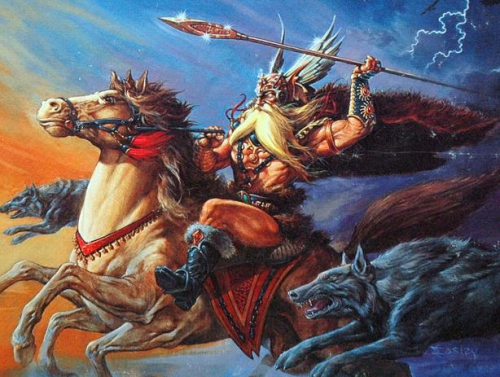
While the Germanic armies reasserted the fury of the Teutons with Wotan unbound, was the reaction of the Allies any less ferocious? One cannot ask such questions in a scholarly manner now any more than in Jung’s time, without expecting to be vilified as a ‘Nazi sympathiser’. We are bound by a moral dichotomy that owes its origins to a God of a different culture. However, might it not be said, given such unusual phenomena as the hangings at Nuremberg[42] or the Morgenthau Plan for the post-war extermination of the Germans and the obliteration of their statehood,[43] that the reaction against the Wotanic storm from out of Germania, was a storm of another type from out of the Levant? Here confronting Wotan was Yahweh, the tribal God of Vengeance, who had metamorphosed over centuries under the impress of the Westerner and assumed the form of the ‘Aryan Christ’,[44] but who was now reasserted in all his ancient tribal fury as a jealous Levantine God of War[45] at the head of the Allied armies. A God moreover whose storms of fire literally incinerated hundreds of thousands in the cities of Dresden, Hamburg, and others. Elsewhere in the ‘Wotan’ essay, Jung alludes to this historical phenomenon of confrontation with a foreign God, referring to Yahweh:
It has always been terrible to fall into the hands of a living god. Yahweh was no exception to this rule, and the Philistines, Edomites, Amorites, and the rest, who were outside the Yahweh experience, must certainly have found it exceedingly disagreeable.[46]
What made Jung hopeful in regard to Hitlerism was that the evocation to conscious recognition of the Unknown God offered the potential opportunity to recognise atavistic impulses and deal with them positively, as the analyst deals with the repressed complexes of the individual, which might then be integrated in a positive and creative manner. It was a mass experiment in analytical psychology that might provide lessons to other peoples and cultures to resolve their inner conflicts.
It is above all the Germans who have an opportunity, perhaps unique in history, to look into their own hearts and to learn what those perils of the soul were from which Christianity tried to rescue mankind. Germany is a land of spiritual catastrophes, where nature never makes more than a pretense of peace with the world-ruling reason. The disturber of the peace is a wind that blows into Europe from Asia’s vastness, sweeping in on a wide front from Thrace to the Baltic, scattering the nations before it like dry leaves, or inspiring thoughts that shake the world to its foundations. It is an elemental Dionysus breaking into the Apollonian order. The rouser of this Tempest is named Wotan, and we can learn a good deal about him from the political confusion and spiritual upheaval he has caused throughout history. For a more exact investigation of his character, however, we must go back to the age of myths, which did not explain everything in terms of man and his limited capabilities, but sought the deeper cause in the psyche and its autonomous powers. Man’s earliest intuitions personified these powers as gods, and described them in the myths with great care and circumstantiality according to their various characters. This could be done the more readily on account of the firmly established primordial types or images which are innate in the unconscious of many races and exercise a direct influence upon them.
Jung now comes to another of his controversial theories; that archetypes became racially differentiated with the differentiation of mankind into races. Jung had elsewhere said of these racial differences that are present in the collective and individual unconscious:
Thus it is a quite unpardonable mistake to accept the conclusions of a Jewish psychology as generally valid.[47] Nobody would dream of taking Chinese or Indian psychology as binding upon ourselves. The cheap accusation of anti-Semitism that has been levelled at me on the grounds of this criticism is about as intelligent as accusing me of an anti-Chinese prejudice. No doubt, on an earlier and deeper level of psychic development where it is still impossible to distinguish between an Aryan, Semitic, Hamitic, or Mongolian mentality, all human races have a common collective psyche. But with the beginning of racial differentiation, essential differences are developed in the collective psyche as well. For this reason we cannot transplant the spirit of a foreign race in globo into our own mentality without sensibility injury to the latter, a fact which does not, however, deter sundry natures of feeble instinct from affecting Indian philosophy and the like.[48]
Given the recognition of racial differentiation in analytical psychology, Jung was therefore able to interpret the actions of nations according to their archetypes, such as their Gods, stating of this in his ‘Wotan’ essay:
Because the behaviour of a race takes on its specific character from its underlying images, we can speak of an archetype ‘Wotan’. As an autonomous psychic factor, Wotan produces effects in the collective life of a people and thereby reveals his own nature. For Wotan has a peculiar biology of his own, quite apart from the nature of man. It is only from time to time that individuals fall under the irresistible influence of this unconscious factor. When it is quiescent, one is no more aware of the archetype Wotan than of a latent epilepsy. Could the Germans who were adults in 1914 have foreseen what they would be today? Such amazing transformations are the effect of the god of wind, that ‘bloweth where it listeth, and thou hearest the sound thereof, but canst not tell whence it cometh, nor whither it goeth’. It seizes everything in its path and overthrows everything that is not firmly rooted. When the wind blows it shakes everything that is insecure, whether without or within. […][49]
However, racial differentiation does not account for the character of the archetypes. Given that, according to Jung, the mind is comprised of inherited layers, not only are the characteristics of the mind inherited on a racial basis but also on a cultural basis. While, as previously mentioned, our brain is comprised of organs that reflect different levels of evolution, from the limbic system to the cerebral cortex, similarly, the unconscious reflects an inherited cultural legacy. This means that ‘modern man’ has been pushed into technological civilisation, and change has been increasing exponentially. Modern man’s psyche is not entirely — not even mainly — ‘modern’. Layers of the mind exist which are inherited from prior cultural epochs, including the most primal. Jung explained this cogently in his autobiography:
If the unconscious is anything at all, it must consist of earlier stages of our conscious psyche… Just as the body has an anatomical prehistory of millions of years, so also does the psychic system. And just as the human body today represents in each of it parts the result of this evolution, and everywhere still shows traces of its earlier stages – so the same may be said of the psyche.[50]
Further, Jung stated of this:
Our souls as well as our bodies are composed of individual elements which were all already present in the ranks of our ancestors. The ‘newsness’ of the individual psyche is an endlessly varied recombination of age-old components. Body and soul therefore have an intensely historical character and find no place in what is new. That is to say, our ancestral components are only partly at home in things that have just come into being. We are certainly far from having finished with the middle ages, classical antiquity, and primitivity, as our modern psyches pretend. Nevertheless we have plunged into a cataract of progress which sweeps us into the future with ever wilder violence the farther it take us from our ranks. The less we understand of what our forefathers sought, the less we understand ourselves, and thus we help with all our might to rob the individual of his roots and his guiding instincts […].[51]
Modern man exists in a technological world, the progress of which is exponential, but his psyche is not able to keep pace with the change. His mind does not ‘progress’ in similar exponential manner. It is a problem also considered by the great physiologist Alexis Carrel, another man of the ‘Right’:[52]
The environment which has moulded the body and the soul of our ancestors during many millenniums has now been replaced by another. This silent revolution has taken place almost without our noticing it. We have not realized its importance. Nevertheless, it is one of the most dramatic events in the history of humanity. For any modification in their surroundings inevitably and profoundly disturbs all living beings. We must, therefore, ascertain the extent of the transformations imposed by science upon the ancestral mode of life, and consequently upon ourselves.[53]
[….] Human beings have not grown so rapidly as the institutions sprung from their brains […].Modern civilization finds itself in a difficult position because it does not suit us. It has been erected without any knowledge of our real nature. […].[54]
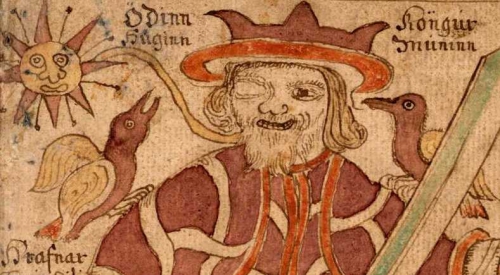
Despite this veneer of technological civilisation and the cult of rationalism and science, as well as the veneer of Christianity, the ancient archetypes do not disappear; they are repressed and lurk in the ‘shadows’ of the collective unconscious. Returning to Jung’s ‘Wotan’ essay:
It was not in Wotan’s nature to linger on and show signs of old age. He simply disappeared when the times turned against him, and remained invisible for more than a thousand years, working anonymously and indirectly. Archetypes are like riverbeds which dry up when the water deserts them, but which it can find again at anytime. An archetype is like an old watercourse along which the water of life has flowed for centuries, digging a deep channel for itself. The longer it has flowed in this channel the more likely it is that sooner or later the water will return to its old bed. The life of the individual as a member of society and particularly as a part of the state may be regulated like a canal, but the life of nations is a great rushing river which is utterly beyond human control, in the hands of One who has always been stronger than men. […] Political events move from one impasse to the next, like a torrent caught in gullies, creeks and marshes. All human control comes to an end when the individual is caught in a mass movement. Then, the archetypes begin to function, as happens, also, in the lives of individuals when they are confronted with situations that cannot be dealt with in any of the familiar ways. But what a so-called Fuhrer does with a mass movement can plainly be seen if we turn our eyes to the north or south of our country. […][55]
Jung saw this return of Wotan as the resurgence of the true Germanic character that had been repressed for centuries, which would not be restrained forever and would break forth somehow, for good or ill. He regarded ‘German Christianity’ as an aberration that was not true to the German character. Jung considered that this force should be openly acknowledged and integrated into the modern German folk, rather than being sublimated into any form of ‘Christianity’. He wrote of the desirable form in which German religiosity should take as being the return to Heathenism:
[…] ‘The German Christians’ are a contradiction in many terms and would do better to join Hauer’s ‘German Faith Movement’. These are decent and well-meaning people who honestly admit their Ergriffenheit and try to come to terms with this new and undeniable fact. They go to an enormous amount of trouble to make it look less alarming by dressing it up in a conciliatory historical garb and giving us consoling glimpses of great figures such as Meister Eckhart, who was, also, a German and, also, ergriffen. In this way the awkward question of who the Ergreifer is is circumvented. He was always ‘God’. But the more Hauer restricts the world-wide sphere of Indo-European culture to the ‘Nordic’ in general and to the Edda in particular, and the more ‘German’ this faith becomes as a manifestation of Ergriffenheit, the more painfully evident it is that the ‘German’ god is the god of the Germans.
One cannot read Hauer’s book without emotion, if one regards it as the tragic and really heroic effort of a conscientious scholar who, without knowing how it happened to him, was violently summoned by the inaudible voice of the Ergreifer and is now trying with all his might, and with all his knowledge and ability, to build a bridge between the dark forces of life and the shining world of historical ideas. But what do all the beauties of the past from totally different levels of culture mean to the man of today, when confronted with a living and unfathomable tribal god such as he has never experienced before? They are sucked like dry leaves into the roaring whirlwind, and the rhythmic alliterations of the Edda became inextricably mixed up with Christian mystical texts, German poetry and the wisdom of the Upanishads. Hauer himself is ergriffen by the depths of meaning in the primal words lying at the root of the Germanic languages, to an extent that he certainly never knew before. Hauer the Indologist is not to blame for this, nor yet the Edda; it is rather the fault of kairos – the present moment in time – whose name on closer investigation turns out to be Wotan. I would, therefore, advise the German Faith Movement to throw aside their scruples. Intelligent people will not confuse them with the crude Wotan-worshipers whose faith is a mere pretense. There are people in the German Faith Movement who are intelligent enough not only to believe, but to know, that the god of the Germans is Wotan and not the Christian God. This is a tragic experience and no disgrace. It has always been terrible to fall into the hands of a living god. Yahweh was no exception to this rule, and the Philistines, Edomites, Amorites, and the rest, who were outside the Yahweh experience, must certainly have found it exceedingly disagreeable. The Semitic experience of Allah was for a long time an extremely painful affair for the whole of Christendom. We who stand outside judge the Germans far too much, as if they were responsible agents, but perhaps it would be nearer the truth to regard them, also, as victims.[56]
Here Jung is advising that the best course for German religiosity to take is an overt recognition of the primacy of Wotan, without being mixed with an ‘Aryan Christ’ or Indo-Aryan scriptures from the East, all of which were popular among German folk-nationalists, who sought a wider ‘Indo-European’ heritage for Germanics stretching to India and Iran. Hence Jung advised to return to the fundamentals that had shaped the German folk, without attempting to synthesise Christ, the Eddas and the Upanishads into a ‘German Faith’ that would still not give Wotan his full realisation. ‘Indology’ had emerged primarily in Germany during the latter half of the 19th Century, as scholars and especially philologists drew connections between the wider Indo-European family of peoples, and found the relationship of Sanskrit to German, English, Latin, etc. and analogies between Hinduism and Germanic Heathenism. As for Christianity, this was now considered an ‘Aryan’ religion, if not in origin at least in the manner by which it was remoulded to fit the pre-existing character of the Germanics. One of the most influential of the 19th century German scholars, Ernst Renan, wrote that, ‘Originally Jewish to the core, Christianity over time rid itself of nearly everything it took from the race, so that those who consider Christianity to be the Aryan religion are in many respects correct’.[57] Such ideas influenced the leading Nazi ideologue Alfred Rosenberg.[58] However, Jung apparently did not embrace any such pan-Aryan notions, and insisted on a divide between East and West regardless of the racial components in the former. Whatever the primeval commonality between Indo-Aryans and Germanics, these had long since been subordinated to the distances that had emerged over millennia that had manifested in a differentiation of archetypes. From Jung’s perspective, it was as unsatisfactory for a Germanic to embrace Indic spirituality as it was for him to embrace the Jewishness of Christianity, as both were alien to the Germanic psyche. As previously alluded to, Jung was to later write of the ‘sundry natures of feeble instinct … affecting Indian philosophy and the like’,[59] when he warned of the negative character of being influenced by foreign archetypes. This is why Jung expressed hope in the work of the German Faith Movement, and evidently sought a purified Wotanism.
However the German Faith Movement never came close to the governing circles of the Reich, and sought unsuccessfully to gain some type of recognition as the ‘true religious expression of Nazism’.[60] What Hauer desired was the creation of a ‘Religious Working Group of the German Nation’ that would encompass the Christian churches along with his own movement, as distinct from their being rivalry between them.[61] Despite the popular literature attempting to link Nazism with paganism, there was little support among the Reich leadership for incorporating Wotanism despite the Heathen rites and allusions to Wotanism among the Hitler Youth, certain influences in the SS, and elsewhere. Although dismissive of the resurgence of a Wotanist religion, Hitler did however see the benefit of Wotanist elements in showing youth ‘the powerful working of divine creation’.[62] What Hitler desired from a pragmatic viewpoint was the union of the Christian denominations within a single Reich Church with himself as head of that Church,[63] in the same manner as the British monarch is recognised as head of the Anglican Church.[64] Hauer of the German Faith Movement sought dialogue with German Christianity, as indicated above, and regarded a German Christian as standing closer to his movement than a non-German pagan.[65] Jung hoped for a more clear-cut approach from the German Faith Movement, as the main body of Wotanism in Germany. He would see nothing good coming from the suggestion of blurring the contrast between Wotanism and ‘Aryan Christianity’, but would see it as a hindrance to the evocation to full consciousness of the Wotan archetype.
If we apply our admittedly peculiar point of view consistently, we are driven to conclude that Wotan must, in time, reveal not only the restless, violent, stormy side of his character, but, also, his ecstatic and mantic qualities – a very different aspect of his nature. If this conclusion is correct, National Socialism would not be the last word. Things must be concealed in the background which we cannot imagine at present, but we may expect them to appear in the course of the next few years or decades. Wotan’s reawakening is stepping into the past; the stream was dammed up and has broken into its old channel. But the Obstruction will not last forever; it is rather a reculer pour mieux sauter, and the water will overleap the obstacle. Then, at last, we shall know what Wotan is saying when he ‘murmurs with Mimir’s head’.[66]
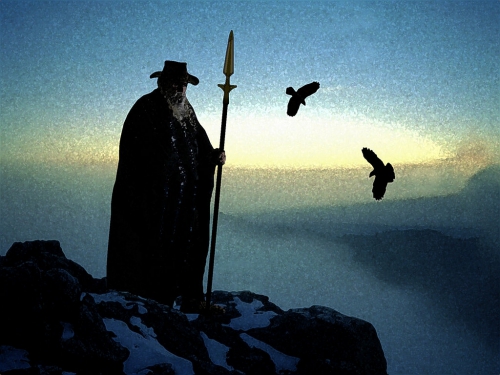
Unleashing a force such as that represented by Wotan represented dangers that Jung clearly recognised. Like a dammed river, its unleashing had the potential to follow a course of ecstatic creative energy or destruction to the point of self-destruction. It has the potential to nourish or to drown. Jung’s pessimism in regard to the world situation increased, and he saw nothing good coming out of the post-war, technology-obsessed, hyper-rationalistic world. He was appalled by the rise of communism, but saw the West’s opposition to it as being ‘entirely bankrupt of countervailing ideas’. ‘Jung thought that the West was faced by four main problems in its deep structure: technology, materialism, lack of individuality and lack of integration. [67] Wotan had been both ineptly summoned by half-conscious acolytes and then beaten back by Yahweh, and nothing was resolved in favour of the West.
Notes
[1] Jung never repudiated his praise for Franco or Mussolini. F McLynn, Jung: A Biography (London: Black Swan, 1997), pp. 351-352.
[2] Martin Heidegger being another primary example. See: Hugo Ott, Martin Heidegger: A Political Life (London: Fontana Press, 1993).
[3] F McLynn, op. cit., pp. 228-229.
[4] C G Jung, ‘Wotan’, Neue Schweizer Rundschau, Zurich, March, 1936, No. 3.
[5] C G Jung, ‘Wotan’, Essays on Contemporary Events (London: Kegan Paul, 1947), Chapter 1.
[6] C G Jung to Miguel Serrano, Zurich, 14 September 1960; in M Serrano, Jung & Hesse: A Record of Two Friendships (New York: Schocken Books, 1968), p. 84.
[7] C G Jung to M Serrano, ibid., pp. 84-85.
[8] D Cox, Analytical Psychology: An Introduction to the Work of C G Jung (Suffolk: Hodder and Stoughton, 1973), pp. 59-60.
[9] D Cox, ibid., p. 61.
[10] D Cox, ibid., p. 62.
[11] D Cox, ibid., pp. 63-64.
[12] C G Jung to M Serrano, op. cit., p. 85.
[13]T Ravenscroft, The Spear of Destiny (Maine: Samuel Weiser, 1973), J H Brennan, The Occult Reich (New York: Signet, 1974), F King, Satan and Swastika (St Albans, Herts.: Granada, 1976), etc.
[14] J Toland, Adolf Hitler (New York: Doubleday & Co, 1976), p. 64.
[15] Ibid.
[16] Ibid.
[17] C G Jung, Collected Works (Princeton University Press, 1970), Volume 10, p. 185.
[18] C G Jung, Psychological Types (London: Kegan Paul, 1933), p. 55.
[19] C G Jung, Collected Works, ‘The Archetypes and the Collective Unconscious’, (1959) Vol. 9, Part 1, p. 275.
[20] F McLynn, op. cit., p. 300.
[21] R Cavendish (ed.) Encyclopaedia of the Unexplained (London: Arkana, 1989), J Webb, ‘Carl Gustav Jung’, p. 129.
[22] C G Jung, Collected Works, Volume 10, op. cit., p. 237.
[23] C G Jung, ‘Wotan’, Essays on Contemporary Events, op. cit., Chapter 1.
[24] Ibid.
[25] Before its subversion and derailing by drugs and Leftist doctrines, hippie-ism was a self-reliance, back-to-the-land movement, that eschewed modernism and technology. In a recent Television documentary on the New Zealand hippies, entitled ‘Dirty Bloody Hippies’, one of the pioneers of this movement in New Zealand commented that the movement was destroyed by the introduction of drugs, with ‘Americans coming over giving away free LSD’. Interestingly, the use of LSD by the CIA and the recruiting of psychedelic guru Timothy Leary by CIA operative Cord Meyer, is now well known.
[26] G Kennedy and K Ryan, Hippie Roots & The Perennial Subculture (Ojai, California: Nivaria Press, 2004), p. 6.
[27] G Kennedy (editor) Children of the Sun: A Pictorial Anthology: From Germany to California 1883-1949 (Ojai, California: Nivaria Press, 1998), p. 7.
[28] G Kennedy and K Ryan, Hippie Roots, op. cit., p. 15.
[29] C G Jung Speaking: Interviews and Encounters, (ed.) W McGuire & R F C Hull (Princeton, New Jersey: Princeton University Press, 1977), pp. 126-128.
[30] P Bishop (ed.) Jung In Contexts (London: Routledge, 1999). See: http://www.scribd.com/doc/6919618/JUNG-IN-CONTEXT1
[31] C G Jung, ‘Wotan’, op. cit.
[32] C G Jung, ‘Wotan’, Ibid.
[33] F McLynn, op. cit., pp. 46, 241.
[34] C G Jung, ‘Wotan’, op. cit.
[35] F Nietzsche (1885) Thus Spoke Zarathustra (Harmondsworth: Penguin Books, 1975).
[36] K H Gundarsson, ‘The Folklore of the Wild Hunt & the Furious Host’, from a lecture delivered to the Cambridge Folklore Society at the house of Dr H R Ellis Davidson. Printed in Mountain Thunder, issue 7, Winter 1992.
[37] C J Jung, ‘Wotan’, op. cit.
[38] G Kennedy (ed.) Children of the Sun, op. cit., pp. 69-70.
[39] Houston Stewart Chamberlain, a Germanophilic Englishman, whose magnum opus, Foundations of the Nineteenth Century, was a seminal influence on both Wilhelmian Germany and National Socialist ideology. See: H S Chamberlain, Foundations of the Nineteenth Century (London: John Lane Co., 1911).
[40] C G Jung, ‘Wotan’, op. cit.
[41] An illustration of Lenin’s pyramid can be seen at: http://rst.gsfc.nasa.gov/Sect6/Sect6_12a.html (accessed on 10 July 2011).
[42] Note the analogy with the Purim celebration commemorating the hanging of Haman as the enemy of Israel, along with his sons. Esther 7:9-10, 9:25.
[43] J Bacque, Crimes and Mercies: The Fate of German Civilians Under Allied Occupation 1944-1950 (London: Little Brown & Co, 1997), passim.
[44] See: K R Bolton, ‘Odin and the Faustian Imperative’, herein. Wotan had also assumed the form of the ‘Aryan Christ’ and there was an unresolved dichotomy between Wotan and this Gothic Christianity within Hitler’s Germany that was not resolved, and was also alluded to in the ‘Wotan’ essay in regard to the German Faith Movement. Note also that Jung also mentions Wotan as being ‘seen, looking rather shamefaced, in the meeting-house of a sect of simple folk in North Germany, disguised as Christ sitting on a white horse’. In regard to the conflict between Wotan and the ‘Aryan Christ’ within National Socialist Germany see: R Steigmann-Gall, The Holy Reich: Nazi Conceptions of Christianity 1919-1945 (New York: Cambridge University Press, 2004), passim.
[45] Deuteronomy 2: 34, etc.
[46] C G Jung, ‘Wotan’, op. cit.
[47] One of Jung’s primary reasons for breaking with Sigmund Freud was that he considered Freud was projecting Jewish traits onto humanity without account for these differences. This of course brought accusations of ‘anti-Semitism’ against Jung.
[48] C G Jung, Collected Works (New York: Pantheon Books, 1953), Vol. 7, p. 149, footnote 8.
[49] C G Jung, ‘Wotan,’, op. cit.
[50] C G Jung, Memories, Dreams, Reflections (New York: Pantheon books, 1961), p. 348.
[51] C G Jung, ibid., pp. 235-236.
[52] K R Bolton, ‘Alexis Carrel: A Commemoration’, Counter-Currents, http://www.counter-currents.com/2010/11/alexis-carrel-a-commemoration-part-1/#more-6258
[53] A Carrel, Man the Unknown (Sydney: Angus and Robertson Ltd., 1937), Chapter 1: 3.
[54] A Carrel, ibid., Chapter 1: 4.
[55] C G Jung, ‘Wotan’, op. cit.
[56] C G Jung, ibid.
[57] R Steigmann-Gall, op. cit., p. 108
[58] Alfred Rosenberg sought to show early in his magnum opus (1930) that Jesus was from a region that had been established by ‘Nordic’ Amorites’, Galilee (p. 6). The problem with Christianity was the influence of Paul undertaking a consciously Jewish mission, whilst John represented the ‘aristocratic spirit’. (pp. 35-37). The Myth of the Twentieth Century (Torrance, California: The Noontide Press, 1982).
[59] C G Jung, Collected Works, 1953, op. cit.
[60] R Steigmann-Gall, op. cit., p. 110.
[61] R Steigmann-Gall, ibid.
[62] R Steigmann-Gall, ibid., p. 143.
[63] R Steigmann-Gall, ibid., pp. 188-189.
[64] R Steigmann-Gall, ibid., pp. 257-258.
[65] R Steigmann-Gall, ibid., p. 149.
[66] C G Jung, ‘Wotan’, op. cit.
[67] F McLynn, op. cit., p. 513.
Source: Woden: Thoughts and Perspectives, vol. 4, ed. Troy Southgate (London: Black Front Press, 2011).
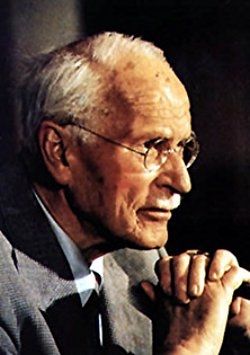 Carl Jung
Carl Jung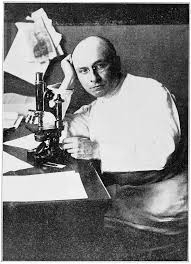 Alexis Carrel
Alexis Carrel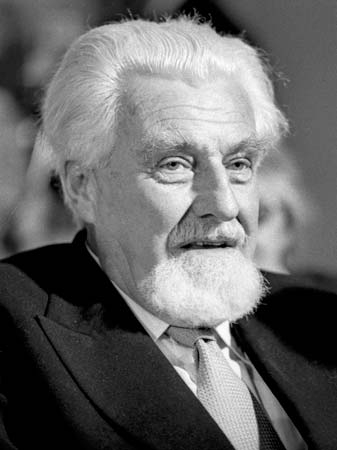 Konrad Lorenz
Konrad Lorenz


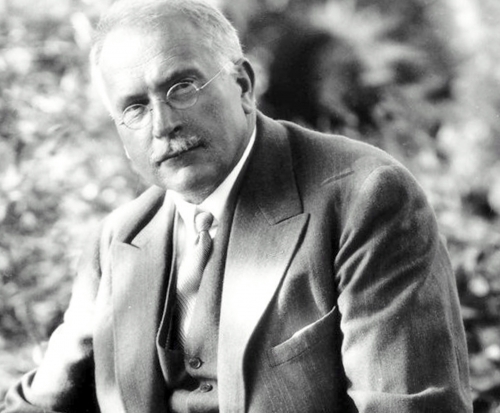


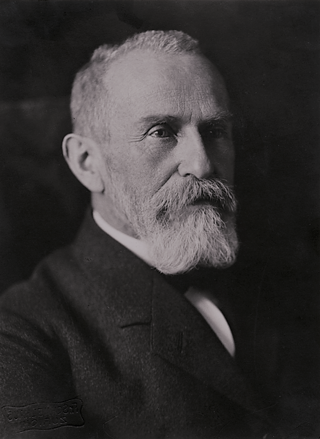 Jung aurait voulu faire une carrière en archéologie, mais des raisons familiales l’incitèrent à étudier la médecine et à se consacrer à la psychiatrie. Poussé par le professeur Bleuler (photo), il consacra sa thèse à la psychologie et à la pathologie des phénomènes occultes. Jung participa activement aux expériences médiumniques de sa cousine, H. Preiswerk. Lui-même vécut d’ailleurs des expériences paranormales dans les maisons où il habitait : il entendit des “explosions” provenant des bibliothèques et vit un couteau se briser mystérieusement en quatre parties. Cet objet fut soigneusement conservé par le savant jusqu’à la fin de ses jours. Le savant suisse était étranger à tout dogmatisme, en particulier vis-à-vis des phénomènes mentionnés, à tout préjugé positiviste, niant la possibilité de l’impossible. Il rencontra Freud, qui le choisit comme élève préféré et comme possible successeur.
Jung aurait voulu faire une carrière en archéologie, mais des raisons familiales l’incitèrent à étudier la médecine et à se consacrer à la psychiatrie. Poussé par le professeur Bleuler (photo), il consacra sa thèse à la psychologie et à la pathologie des phénomènes occultes. Jung participa activement aux expériences médiumniques de sa cousine, H. Preiswerk. Lui-même vécut d’ailleurs des expériences paranormales dans les maisons où il habitait : il entendit des “explosions” provenant des bibliothèques et vit un couteau se briser mystérieusement en quatre parties. Cet objet fut soigneusement conservé par le savant jusqu’à la fin de ses jours. Le savant suisse était étranger à tout dogmatisme, en particulier vis-à-vis des phénomènes mentionnés, à tout préjugé positiviste, niant la possibilité de l’impossible. Il rencontra Freud, qui le choisit comme élève préféré et comme possible successeur.  Ce moment historique fut très difficile pour le psychologue des archétypes, qui réussit à surmonter la crise grâce à une figure féminine de grande importance pour sa vie, Tony Wolff (ci-contre). Jung, avec cette patiente et élève, eut une liaison passionnée que sa femme Emma parvint à tolérer grâce à l’amour sincère qui la liait à Carl. D’ailleurs, la confrontation avec l’“éternel féminin” selon Goethe joua toujours un rôle déterminant pour Jung, comme en témoigne la relation avec Sabine Spielrein, discutée par Giovetti.
Ce moment historique fut très difficile pour le psychologue des archétypes, qui réussit à surmonter la crise grâce à une figure féminine de grande importance pour sa vie, Tony Wolff (ci-contre). Jung, avec cette patiente et élève, eut une liaison passionnée que sa femme Emma parvint à tolérer grâce à l’amour sincère qui la liait à Carl. D’ailleurs, la confrontation avec l’“éternel féminin” selon Goethe joua toujours un rôle déterminant pour Jung, comme en témoigne la relation avec Sabine Spielrein, discutée par Giovetti.  La lecture du Livre rouge, composé de textes écrits en calligraphie gothique et de dessins, parmi lesquels de nombreux mandalas, clarifie la dimension imaginale, loin d’être centrée sur le logos, de la pensée jungienne, et symbolise le parcours existentiel et spirituel du psychothérapeute. Jung a tout mis en évidence dans la construction de la Tour de Bollingen, à laquelle il a travaillé personnellement, témoignage architectural de son univers de référence. Un cosmos silencieux face à l’approche casuistique, mais qui se révèle par l’approche analogique et synchronicique : « Le concept de synchronicité […] désigne la correspondance significative d’événements sans relation causale entre eux » (p. 157). Jung était homo religiosus: grâce à l’intégration acquise, il put conclure une interview, dans la dernière période de sa vie: «Je n’ai pas besoin de croire, je sais!» (p. 207).
La lecture du Livre rouge, composé de textes écrits en calligraphie gothique et de dessins, parmi lesquels de nombreux mandalas, clarifie la dimension imaginale, loin d’être centrée sur le logos, de la pensée jungienne, et symbolise le parcours existentiel et spirituel du psychothérapeute. Jung a tout mis en évidence dans la construction de la Tour de Bollingen, à laquelle il a travaillé personnellement, témoignage architectural de son univers de référence. Un cosmos silencieux face à l’approche casuistique, mais qui se révèle par l’approche analogique et synchronicique : « Le concept de synchronicité […] désigne la correspondance significative d’événements sans relation causale entre eux » (p. 157). Jung était homo religiosus: grâce à l’intégration acquise, il put conclure une interview, dans la dernière période de sa vie: «Je n’ai pas besoin de croire, je sais!» (p. 207).
 del.icio.us
del.icio.us
 Digg
Digg
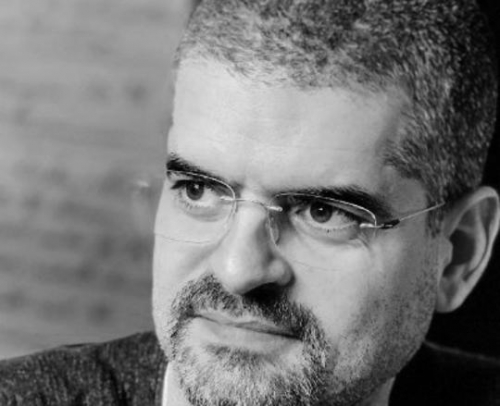
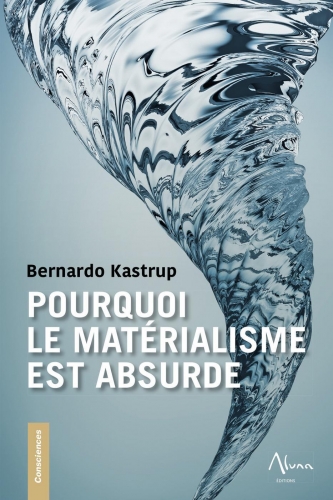
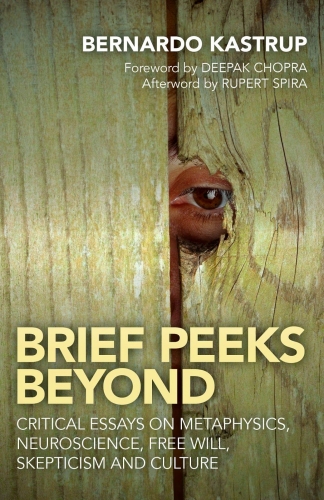
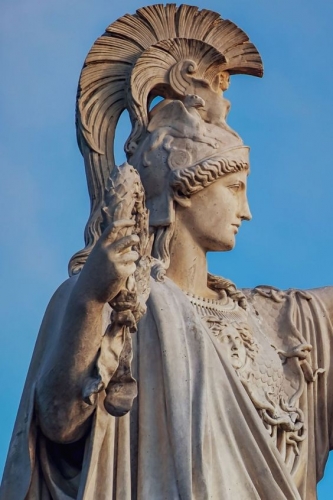
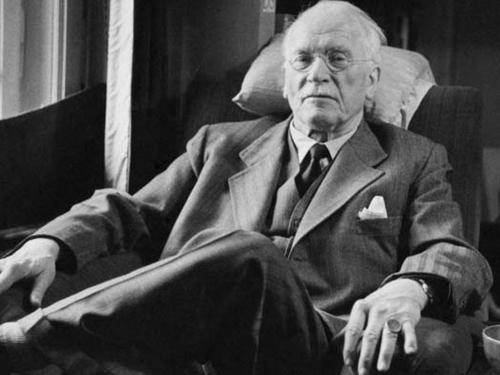
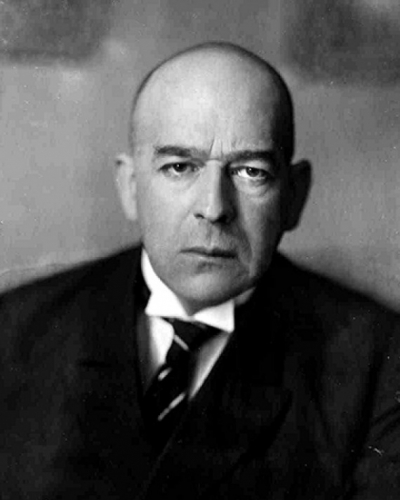
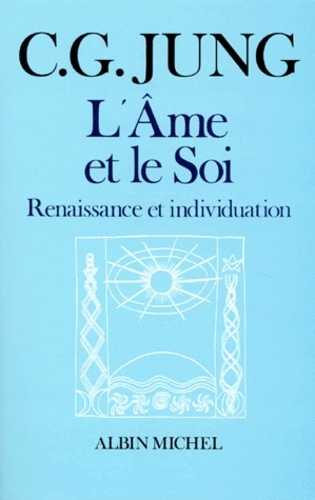
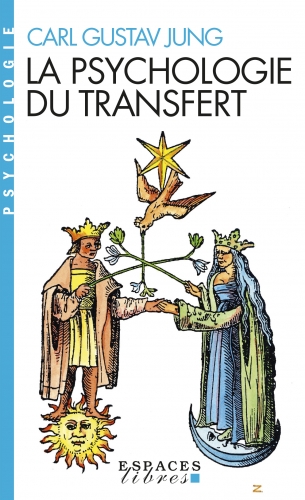
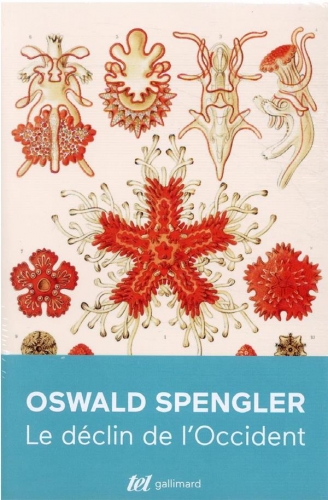


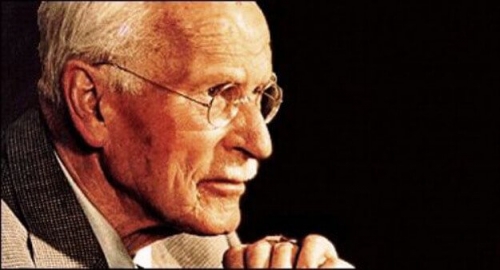
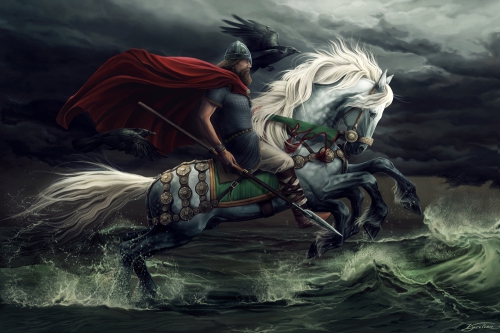
 The things that are repressed are those that undermine our image of ourselves if we remembered them.[9] Hence, the Germanics, having been a Christian folk for centuries, were required to repress their ancestral Heathenism, and Wotan thereby became an archetype relegated to the ‘shadow’ of that folk’s collective unconscious, but continuing to exist nonetheless. While repression might play a healthy role in individual development, it is usually undesirable. The Jungian, David Cox, continues:
The things that are repressed are those that undermine our image of ourselves if we remembered them.[9] Hence, the Germanics, having been a Christian folk for centuries, were required to repress their ancestral Heathenism, and Wotan thereby became an archetype relegated to the ‘shadow’ of that folk’s collective unconscious, but continuing to exist nonetheless. While repression might play a healthy role in individual development, it is usually undesirable. The Jungian, David Cox, continues: The imagery has the characteristics of Wotan as leader of the Wild Hunt. It is in this role that Wotan had survived his relegation to the ‘shadow of the German collective unconscious, which enabled him through the centuries to re-emerge into consciousness. It is in this role that Wotan has manifested from Scandinavia to Switzerland. Nietzsche’s dream contains all the primary elements of the myth. It is in forests at night that an unwary traveller might encounter a frightening countenance of Wotan, with the cry of ‘Midden in dem Weg!’, while his fellows shout ‘Wod! Wod!’[36] Nietzsche as a lad of 15 had encountered the ‘Unknown God’ as Wotan in the form of the Wild Huntsman, but had never recognised him. Despite his later poetic descriptions of the ‘Unknown God’ who is unmistakably Wotan, his identity remained obscured by Nietzsche’s Classical preoccupations. Jung continues with another prophetic vision among the Germans of the return of Wotan:
The imagery has the characteristics of Wotan as leader of the Wild Hunt. It is in this role that Wotan had survived his relegation to the ‘shadow of the German collective unconscious, which enabled him through the centuries to re-emerge into consciousness. It is in this role that Wotan has manifested from Scandinavia to Switzerland. Nietzsche’s dream contains all the primary elements of the myth. It is in forests at night that an unwary traveller might encounter a frightening countenance of Wotan, with the cry of ‘Midden in dem Weg!’, while his fellows shout ‘Wod! Wod!’[36] Nietzsche as a lad of 15 had encountered the ‘Unknown God’ as Wotan in the form of the Wild Huntsman, but had never recognised him. Despite his later poetic descriptions of the ‘Unknown God’ who is unmistakably Wotan, his identity remained obscured by Nietzsche’s Classical preoccupations. Jung continues with another prophetic vision among the Germans of the return of Wotan:


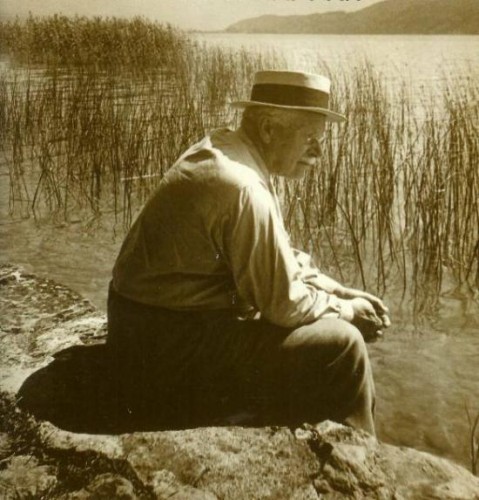
 The remembrance flies, I see its image, it’s on my mind. So very recently I arrived at his house, amid a fine rain. Jung’s house is in the outskirts of Zurich, in Künsnacht. At the entrance’s portal there is a phrase in Latin that reads, more or less, “Think or not in God. He is always present.” Inside there are paintings and beautiful objects, antique engravings, mediaeval paintings. I was received by Ms. Beiley, who invited me into a small living room, where she served us tea.
The remembrance flies, I see its image, it’s on my mind. So very recently I arrived at his house, amid a fine rain. Jung’s house is in the outskirts of Zurich, in Künsnacht. At the entrance’s portal there is a phrase in Latin that reads, more or less, “Think or not in God. He is always present.” Inside there are paintings and beautiful objects, antique engravings, mediaeval paintings. I was received by Ms. Beiley, who invited me into a small living room, where she served us tea.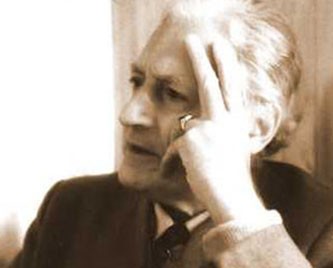 I now ask Dr. Jung, “And what do you believe? Is there?” He answers, “if the human mind can operate independently of the brain, then it operates independently of space and time. And if it operates independently of space and time, it is incorruptible.”
I now ask Dr. Jung, “And what do you believe? Is there?” He answers, “if the human mind can operate independently of the brain, then it operates independently of space and time. And if it operates independently of space and time, it is incorruptible.”